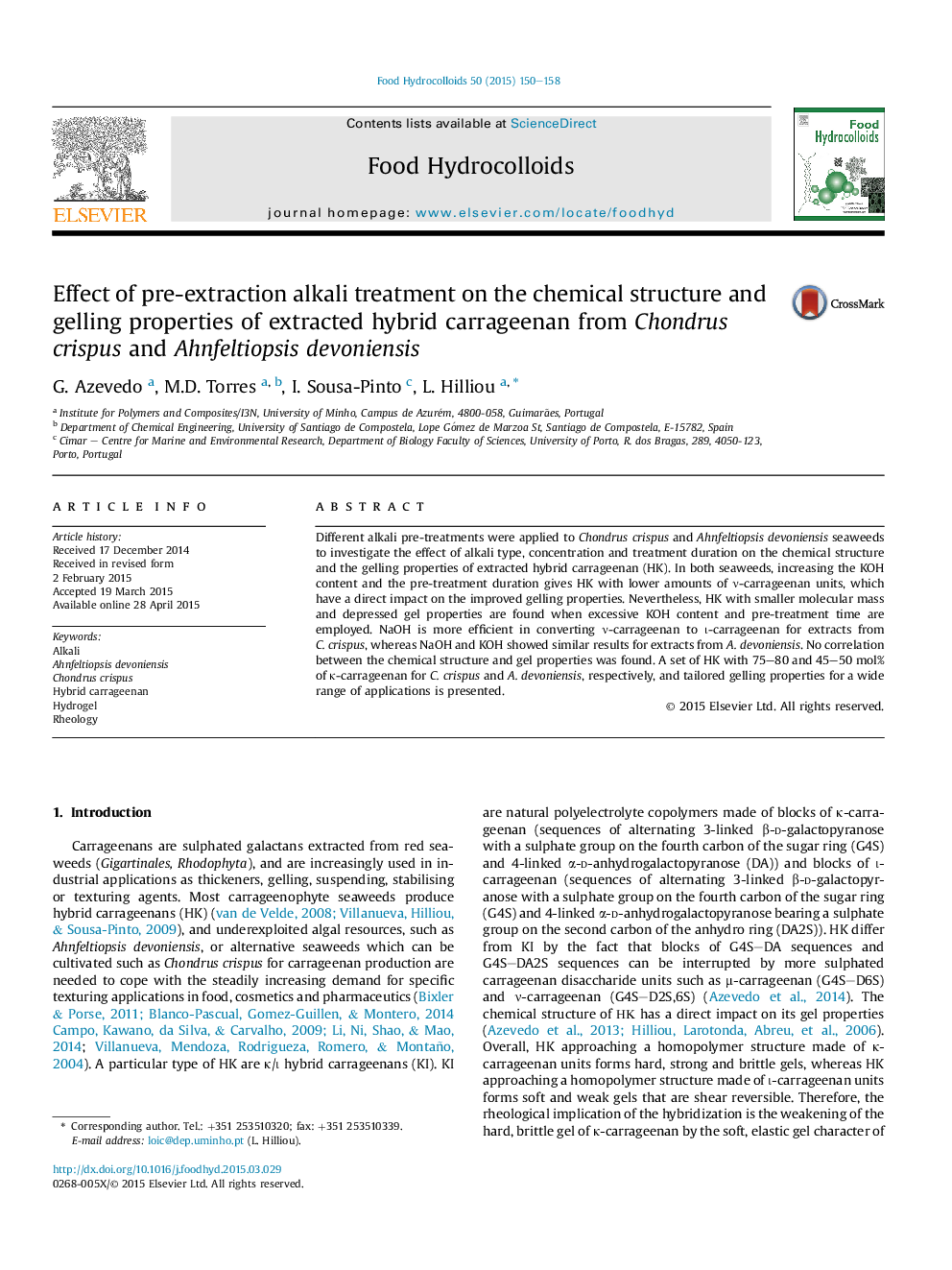| Article ID | Journal | Published Year | Pages | File Type |
|---|---|---|---|---|
| 604191 | Food Hydrocolloids | 2015 | 9 Pages |
•κ/ι−hybrid carrageenan (KI) with 75–80 mol% of κ-carrageenan are extracted from Chondrus crispus.•KI with 45–50 mol% of κ-carrageenan are extracted from Ahnfeltiopsis devoniensis.•NaOH is more efficient than KOH for the alkali-induced conversion of ν-carrageenan into ι− carrageenan.•KI containing less than 45–50 mol% of κ-carrageenan do not show salt selectivity.•In 1 M NaCl, 1 wt% KI gel elasticity does not depend on the κ-carrageenan content.
Different alkali pre-treatments were applied to Chondrus crispus and Ahnfeltiopsis devoniensis seaweeds to investigate the effect of alkali type, concentration and treatment duration on the chemical structure and the gelling properties of extracted hybrid carrageenan (HK). In both seaweeds, increasing the KOH content and the pre-treatment duration gives HK with lower amounts of ν-carrageenan units, which have a direct impact on the improved gelling properties. Nevertheless, HK with smaller molecular mass and depressed gel properties are found when excessive KOH content and pre-treatment time are employed. NaOH is more efficient in converting ν-carrageenan to ι-carrageenan for extracts from C. crispus, whereas NaOH and KOH showed similar results for extracts from A. devoniensis. No correlation between the chemical structure and gel properties was found. A set of HK with 75–80 and 45–50 mol% of κ-carrageenan for C. crispus and A. devoniensis, respectively, and tailored gelling properties for a wide range of applications is presented.
Graphical abstractFigure optionsDownload full-size imageDownload as PowerPoint slide
